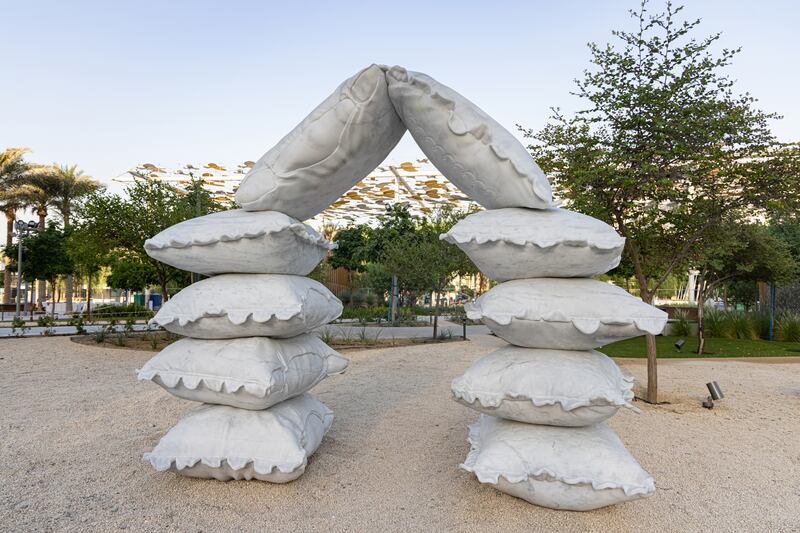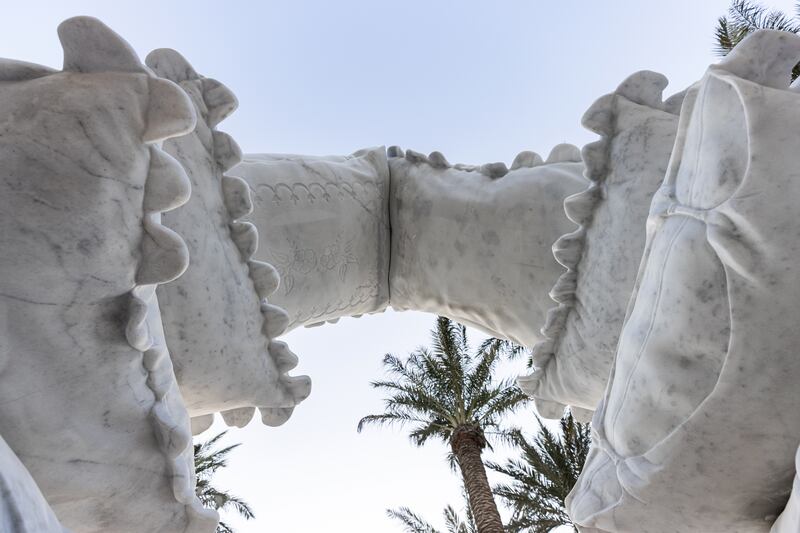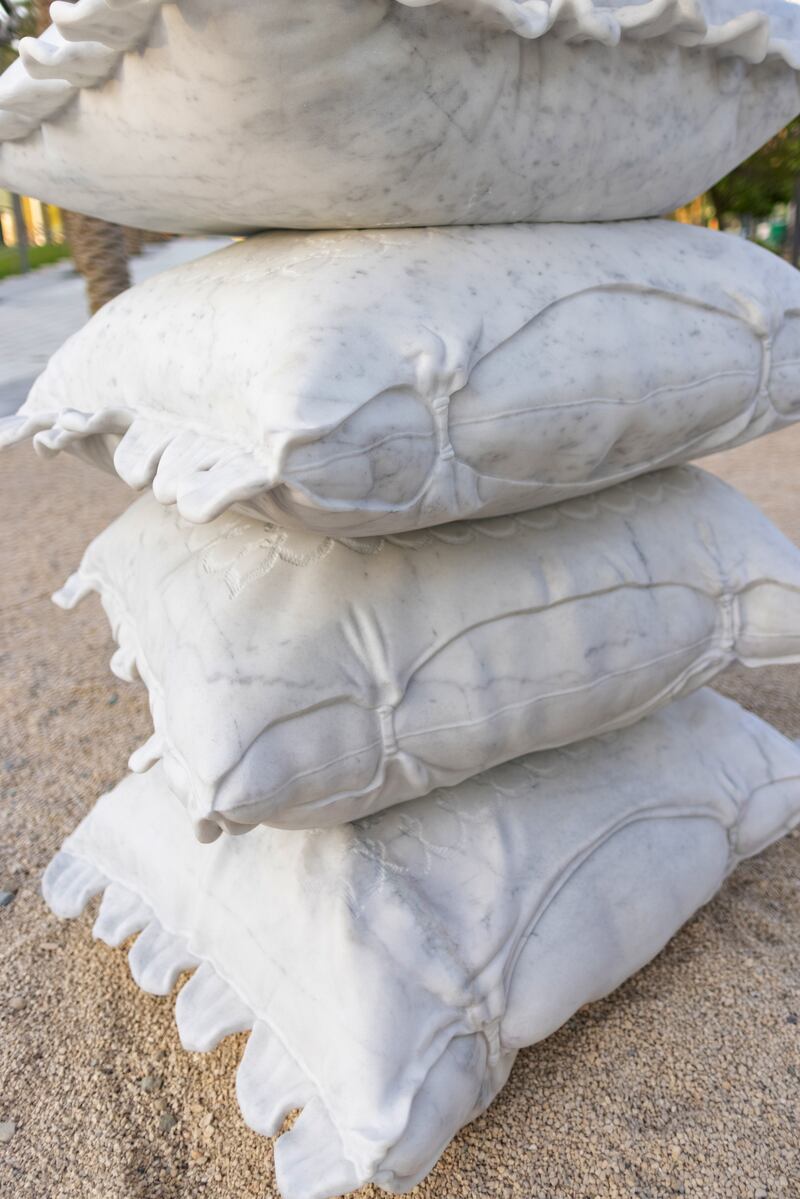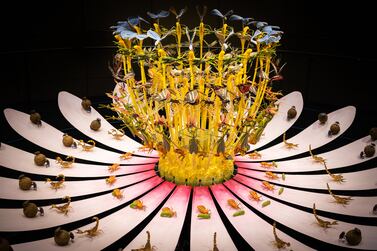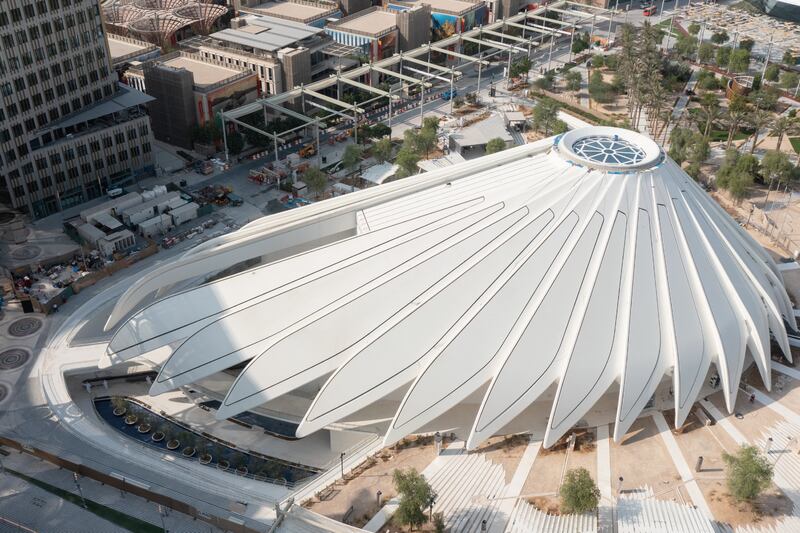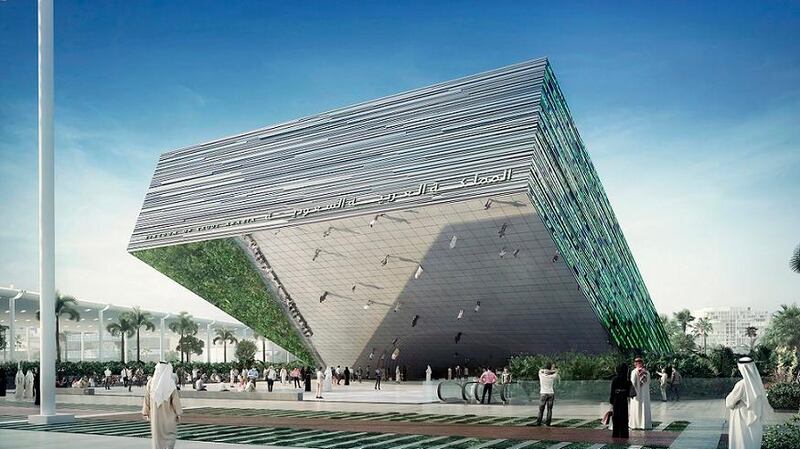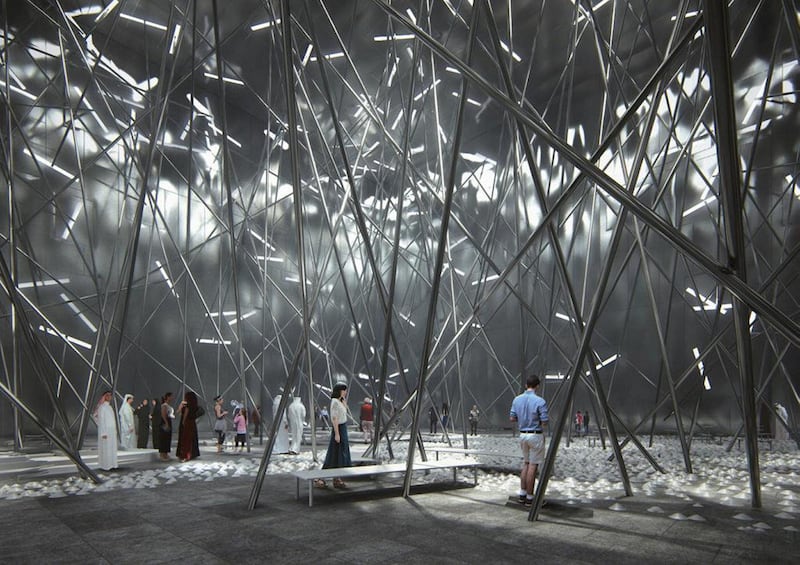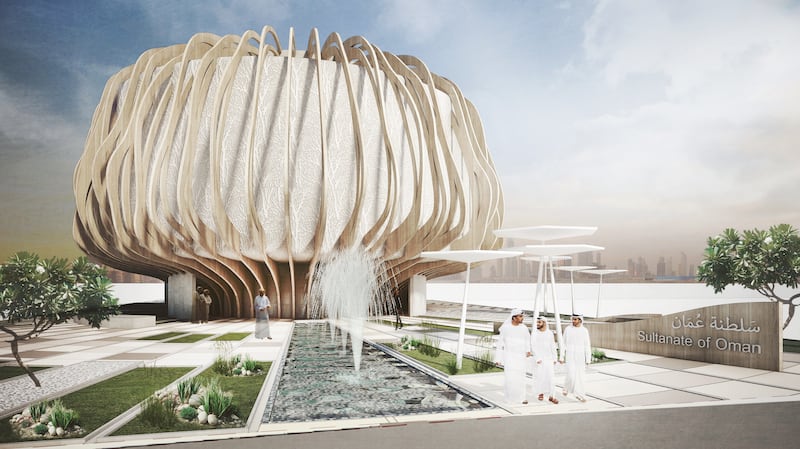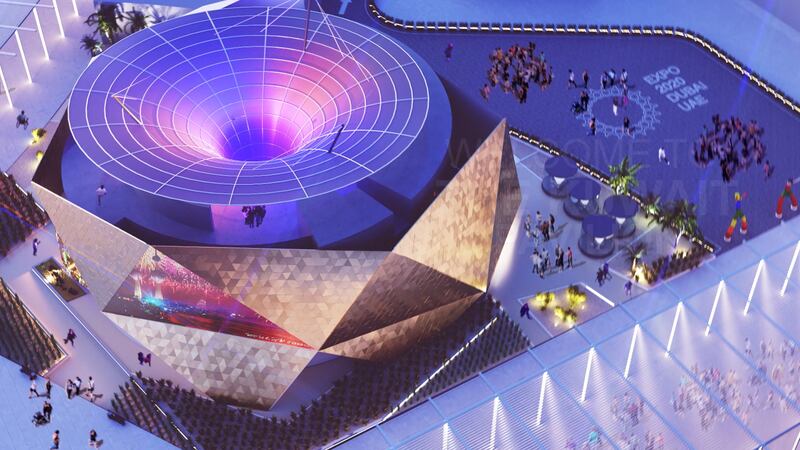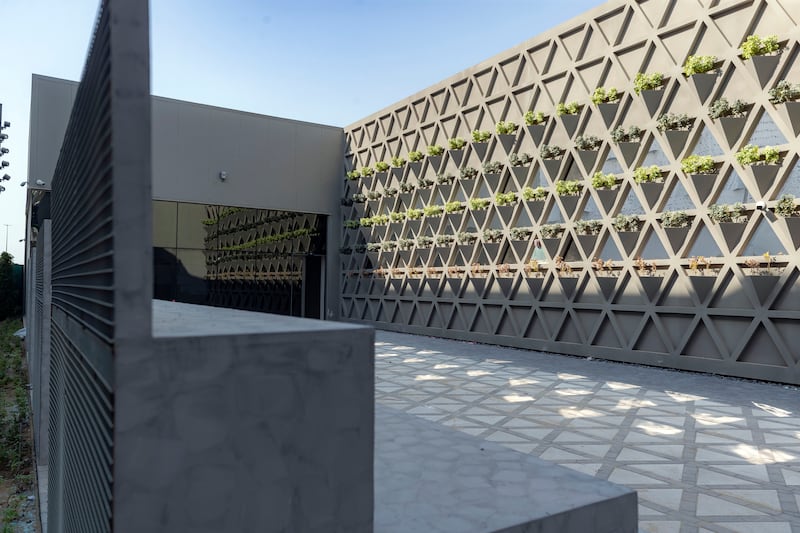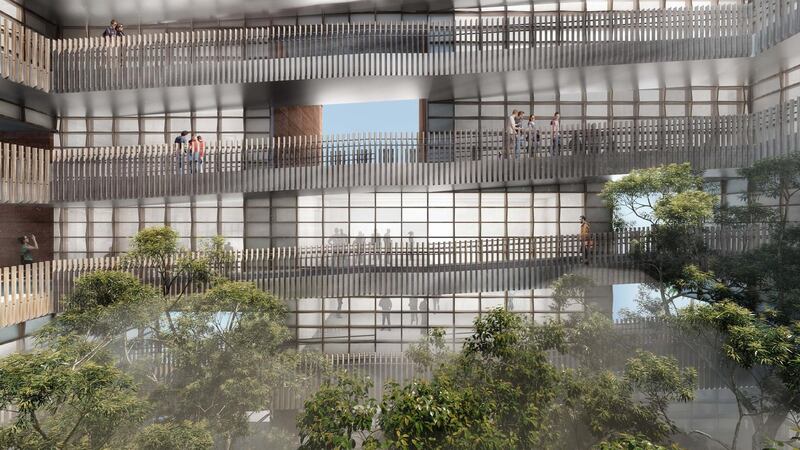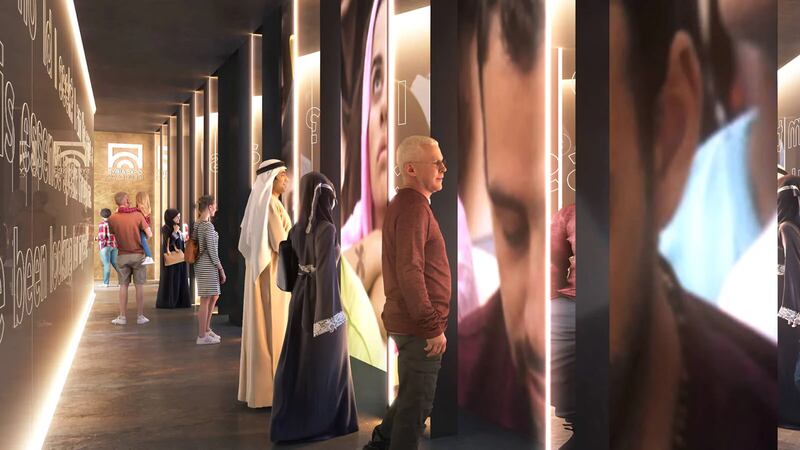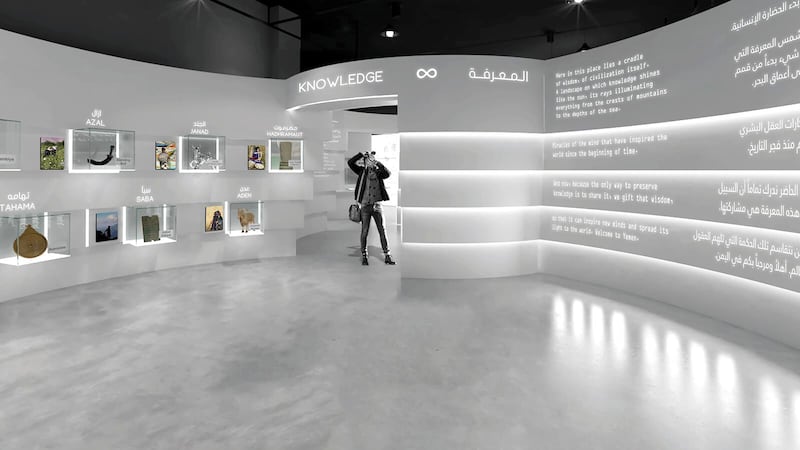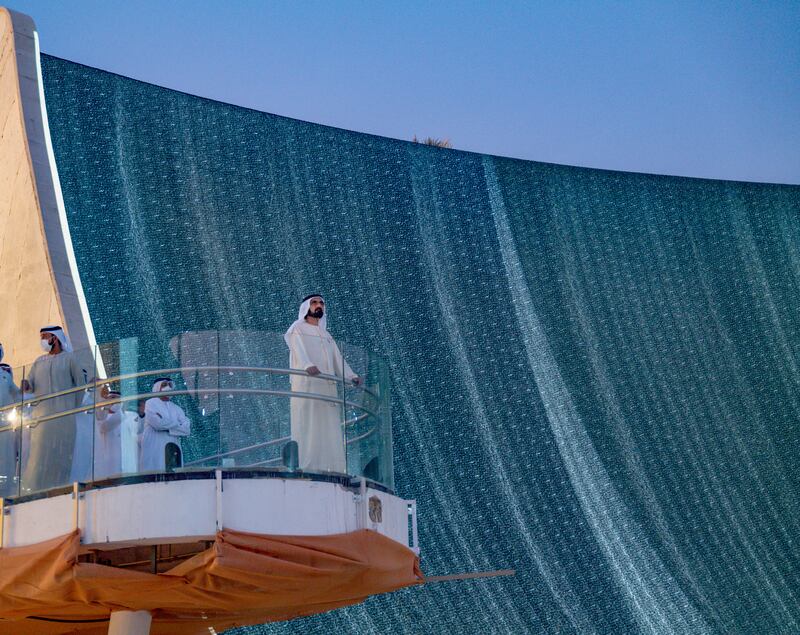Afra Al Dhaheri’s Pillow Fort stands as visual trickery. The sculpture of stacked tikkay, or traditional Emirati floor pillows, may seem soft in its material and in our childhood memories of play, but it is actually made of hard marble.
The work, which acts as a “space within a space”, attempts to transform how viewers engage with their surroundings and invites them to connect with memory.
It is also among 11 works that will be unveiled at Expo 2020 Dubai on October 1 as part of its public art programme.
Curated by Tarek Abou El Fetouh, with special sections put together by Muneera Al Sayegh and Mohammed Al Olama, the programme includes works by Kuwaiti artist Monira Al Qadiri, whose near five-metre-sculpture Chimera is among the largest works on show.
Other commissioned artists are Hamra Abbas, Olafur Eliasson, Nadia Kaabi-Linke, Khalil Rabah, Yinka Shonibare, and Haegue Yang. Emirati artists, such as Al Dhaheri, along with Abdullah Al Saadi, Asma Belhamar and Shaikha Al Mazrou are also taking part.
Their artworks will become permanent fixtures of the Expo 2020 Dubai site after the event closes in March and the area becomes District 2020.
Terhal by Al Saadi showcases map-like paintings modelled on stones from the Wadi Tayyibah region in the Hajar Mountains of Fujairah. The stones are laid out with the artist’s symbolic code, creating a language that viewers are invited to decipher.
Meanwhile, Al Mazrou presents The Plinth, conceived as a collaborative work, with the artist intending for the sculpture to foster future dialogue with other artists who can then exhibit works in response or relation to the piece.
Belhamar’s Distorted Familiarities contemplates the relationship between nature and the built environment. She focuses on the shift that occurs when one commutes between mountainous landscapes and urban spaces, considering it as a journey in scale and time.
Both Belhamar and Al Dhaheri’s works are part of the special section developed by Al Sayegh and Al Olama that consider how monuments relate to architecture, nature and memory.
Abou El Fetouh’s programme for Expo 2020 draws from the Book of Optics by the 11th-century Arabic scholar Ibn Al Haytham.
Speaking to The National last year, the curator, who has worked on the 2009 Sharjah Biennial and has developed the performance programme Durub Al Tawaya for Abu Dhabi Art, explained that Al Haytham’s shaped much of how we understand the cosmos, particularly his discovery that our vision of the stars isn’t the star itself, but the light that strikes it.
“[Al Haytham] was working on the cognition of the full picture – that the recognition of the full picture only happens in the imagination … What are the elements that help humans build images in his or her imagination?,” Abou El Fetouh said.
In the context of Expo 2020 Dubai, he expands this thought into “an image of the world”.
With more than 190 countries presenting individual pavilions, the World Expo event raises questions about projections of nationhood and culture, but also about the possibilities of globalism and unity.
Scroll through our gallery below to see more of the Arab pavilions at Expo 2020 Dubai:
